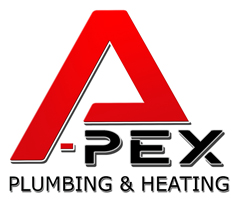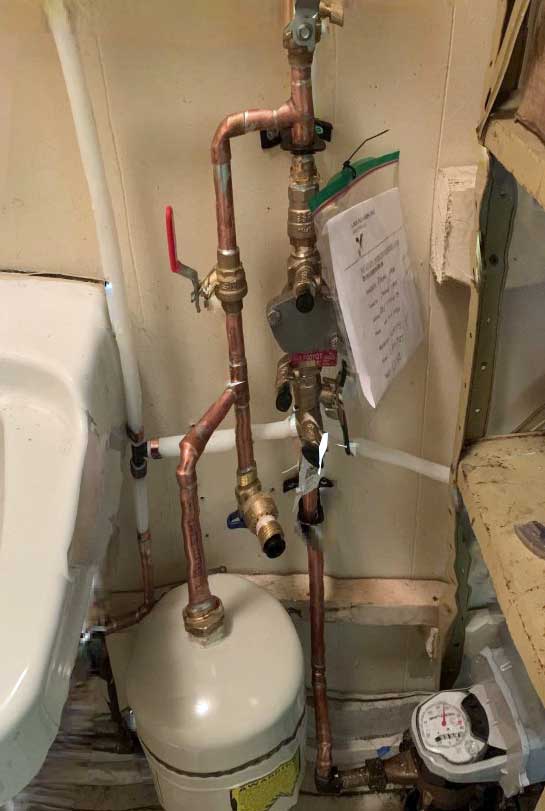Backflow Preventers
A backflow preventer allows water to flow in only one direction, preventing the undesirable reversal of water flow. This ensures that contaminated water does not enter the clean water supply.
Backflow can occur in various situations, such as when changes in water pressure within the system cause contaminated water from industrial, commercial, or residential sources to flow backward into the potable water supply.
Contaminants like fertilizers and pesticides, pet or human feces, chlorine from pools or hot tubs, soap or detergents from sinks, showers, or dishwashers, and other harmful substances can pose serious health risks if ingested.
By preventing backflow, these devices keep drinking water safe and free from pollutants. This is especially important in municipal water systems, where a single backflow incident can affect many households.
Many local and national plumbing codes and regulations require backflow preventers in certain situations. Complying with these regulations is necessary to avoid legal penalties and ensure the safety of the water supply.
Types of Backflow Preventers
- Atmospheric Vacuum Breaker (AVB)
An AVB is a simple and inexpensive device that prevents backflow by allowing air into the system when negative pressure is detected. It is commonly used in irrigation systems and residential plumbing. - Pressure Vacuum Breaker (PVB)
A PVB is similar to an AVB but includes a spring-loaded valve that closes when positive pressure is restored. It is suitable for applications requiring higher protection levels, such as commercial plumbing and sprinkler systems. - Double Check Valve Assembly (DCVA)
A DCVA consists of two check valves in series, providing redundant protection against backflow. People commonly use it in industrial and commercial applications where a higher level of protection is needed. - Reduced Pressure Zone Assembly (RPZ)
An RPZ is the most advanced and reliable type of backflow preventer. It includes a pressure relief valve that opens when the pressure differential across the check valves is too low. People use RPZs in high-risk applications, such as hospitals and chemical plants, where contamination could have severe consequences.
Installation Process
- Assessment and Planning
Before installing a backflow preventer, a thorough assessment of the plumbing system and potential backflow hazards is necessary. A licensed plumber or backflow specialist will evaluate the system to determine the appropriate type of backflow preventer and the best installation location. - Selecting the Right Device
Choosing the right backflow preventer depends on the specific requirements of the application, the level of risk, and local regulations. Water pressure, flow rate, and the type of contaminants that need to be prevented will influence the choice of device. - Preparing the Installation Site
Prepare the installation site by shutting off the water supply and draining the system to prevent any water flow during installation. The site should be accessible for maintenance and inspection and located to prevent any interference with the device’s operation. - Installing the Backflow Preventer
The installation process involves several key steps:
- Final Inspections and Approvals
After installation, a qualified professional or local building authority must conduct a final inspection. This inspection ensures that the installation meets all safety standards and regulations. Once approved, the backflow preventer is ready for use, protecting the system against backflow.
Maintenance and Testing
Regularly maintaining and testing backflow preventers is essential to ensure their continued effectiveness. This includes:
- Annual testing: Most local regulations require annual testing by a certified backflow tester to ensure the device functions correctly.
- Periodic inspections: Regular inspections for signs of wear, damage, or leaks help identify potential issues before they become serious problems.
- Cleaning and servicing: Periodic cleaning and servicing of the backflow preventer ensure that it operates efficiently and remains free from debris or buildup that could affect its performance.
Conclusion
Backflow preventers play a critical role in protecting public health and ensuring safe drinking water by preventing contaminants from entering the potable water supply. To maintain a safe and compliant plumbing system, it is essential to understand the different types of backflow preventers, their purpose, and the installation process. Regular maintenance and testing further ensure that these devices continue to provide reliable protection against backflow, safeguarding the health and well-being of the community.

